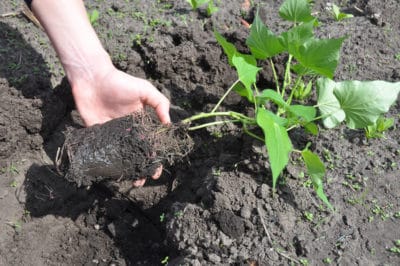Sweet Potato Basics
Sweet potatoes are a long-season crop, with a minimum requirement of a 100-day growing season. They are also extremely sensitive to frost – after all, this is a tropical plant. They must have a minimum soil temperature of 60°F (16°C). Nighttime air temperatures are also important – for best growth the air temperature should be above 60°F (16°C). Time your plantings for these conditions.
Choosing Varieties
Although sweet potatoes prefer conditions like those found in USDA Zone 8 and 9, gardeners in colder areas can grow them by choosing short-season varieties. Here are some possibilities:
- Beauregard – 90 to 100 days
- Carolina Ruby – 100 days
- Georgia Jet – 90 to 100 days
- O’Henry – 100 days
- Vardaman – 95 days.
Starting Slips
You grow sweet potatoes by starting them from sprouts, or slips, propagated from a sweet potato tuber. It takes about seven to eight weeks for slips to be ready to plant. In a warm area, you’ll have plenty of time, and can start them in May. In a cold area, you must get a jump on the season by using a greenhouse or sunny windowsill and should start them by April 1st.
Soil Preparation
Sweet potatoes don’t need really high-fertility soil, but they like a loose friable texture. Once you’ve prepared the planting bed, cover the soil with black plastic to warm it. In colder areas, you may want to leave the plastic on for the entire growing season and use drip irrigation. Check weather records to see when nighttime temps will warm; apply black plastic at least two weeks prior to that date.
Planting Out
Consider planting your slips in pots for two or three weeks after roots appear on the slips. This allows for weather variables. Plant your slips in the garden no earlier than two weeks after the expected last frost date. In addition to the black plastic, use other techniques to keep the slips warm. Cover the plants with garden fabric at night for three or four weeks after planting.
The Growing Season
If your expected growing season is 120 days or less, using the techniques above means you should transplant your slips into the garden no later than June 1st. The longer you can give the plants warm growing conditions, the better your harvest. Start checking tubers at 90 days. The longer you can leave them in the ground the better, but always harvest at least two weeks before the first expected frost date.
